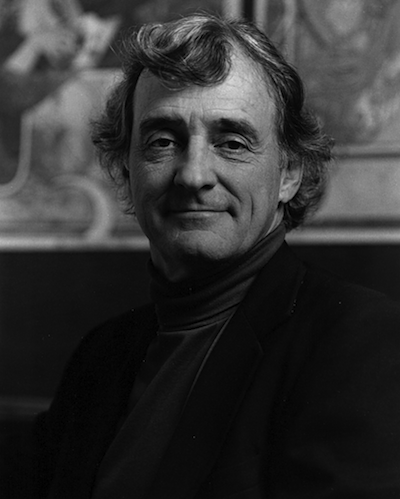Patrick Billingsley, scholar, writer, and actor, died Friday, April 22 at the age of 85. He is survived by his children Franny, Patty, Julie, Marty and Paul, and by his companion, Florence Weisblatt. His late wife of nearly 50 years, social activist Ruth Billingsley, died in 2000.
Billingsley was born May 3, 1925 in Sioux Falls, South Dakota. He earned a bachelor’s degree in engineering from the US Naval Academy in 1948, then served in the US Navy until 1957. As a Navy officer he lived for a year in Japan, where he earned a black belt in judo. While still a naval officer he entered the Princeton University graduate program in mathematics; he received a master’s degree in 1952 and a doctorate in 1955, the latter under the supervision of William Feller. In 1957–58 he worked as a National Science Foundation Fellow in Mathematics at Princeton. Billingsley joined the faculty at the University of Chicago in 1957, with appointments in the departments of Statistics and Mathematics, and remained on the faculty until retiring as professor emeritus in 1994. He served as chairman (or, as he liked to put it, “acting chairman”) of the Statistics department, from 1980 to 1983. He was a Fulbright Fellow and visiting professor at the University of Copenhagen, Denmark in 1964–65 and a Guggenheim Fellow and visiting professor at the University of Cambridge, England, in 1971–72. Billingsley was the first editor of the Annals of Probability, from 1976 to 1979, and President of the IMS in 1983.
Billingsley’s professional accomplishments were many and varied, but he will be remembered first and foremost as an expositor. He wrote five books, Statistical Inference for Markov Processes (1961), The Elements of Statistical Inference (in collaboration with David Huntsberger, 1986), Ergodic Theory and Information (1965), Convergence of Probability Measures (1968), and Probability and Measure (1978). The last three all became, at least for a time, the authoritative works on their subjects; all are still widely cited, and Probability and Measure, now in its third edition, is still a standard graduate-level textbook. Billingsley also published a number of expository papers, including an article on prime numbers and Brownian motion that was awarded a Lester R. Ford prize for mathematical writing. In this article he explained that his approach to mathematical exposition had come from his PhD mentor Feller: “For the most part I shall only illustrate general results by examples and special cases. For this there is the authority of William Feller, who used to tell us, his students, that the best in mathematics, as in art, letters, and all else […] consists of the general embodied in the concrete.”
He went on, perhaps recalling his days in the US military, “Although at first I thought that was simply an anti-military statement, I did eventually understand it as the intellectual-esthetic principle he intended and have tried ever since to keep it at the front of my mind.”
Billingsley is perhaps best known in mathematical analysis as the inventor of what is now called Billingsley dimension, an extension of the notion of Hausdorff dimension to positive Borel measures. The Billingsley dimension is one of three fundamental quantities attached to an ergodic, invariant probability measure in a smooth dynamical system, the others being the Kolmogorov-Sinai entropy and the Lyapunov exponent(s). The relationships among these three quantities was an important theme in the study of smooth, chaotic dynamical systems in the 1970s and 1980s, which culminated in the celebrated Ledrappier-Young formula expressing entropy as the sum of the Lyapunov exponents multiplied by the directional Billingsley dimensions. Billingsley also made important contributions to the field of weak convergence—beginning with his PhD thesis on the invariance principle for dependent random variables—and to probabilistic number theory. He delivered the 1973 Wald lectures on the probability theory of additive arithmetic functions, and the 1972 Rouse Ball lecture at Cambridge on prime numbers and Brownian motion.
In the mid-1960s Billingsley embarked on what became a parallel career in acting. His first roles were in amateur productions, but beginning in 1970 he played leading roles in more than 20 professional productions at the Court Theatre and Body Politic Theatre in Chicago. His roles included the Captain in We Bombed in New Haven (1970); Alonzo in The Tempest (1977); Dysart in Equus, (1980); and Petey in The Birthday Party (1978 and 1985). A talent scout saw him perform in The Lover in 1977, and this led to a successful audition for a part in the 1978 Kirk Douglas film The Fury. Billingsley never met Douglas, but they appear on screen together during a car chase on Wacker Drive and Van Buren Street in Chicago; Billingsley played a bad guy who ended up dying in a fiery crash. He went on to appear in seven more films and in nine television shows. Among other roles, he played a biology teacher in My Bodyguard (1980), the professor in Somewhere in Time (1980) and the bailiff in The Untouchables (1987).
Billingsley was, in the words of his daughter Marty, a “true Renaissance man”, a man of diverse interests who excelled in many things. He painted; he wrote; he read Beowulf in the original Old English; he worked out daily in the university gym for nearly 40 years. He had a wry comment for almost every occasion. When he vacated his office in Eckhart Hall some years back, he invited me to help myself to whatever books were there. I was amused—but not surprised—to find, between a worn copy of Burns’ Poems and Songs and a Complete Works of William Shakespeare, a copy of Arnold Schwarzenegger’s 1978 autobiography, Arnold: The Education of a Bodybuilder.
Written by Steve Lalley, University of Chicago

Comments on “Obituary: Patrick Billingsley, 1925–2011”